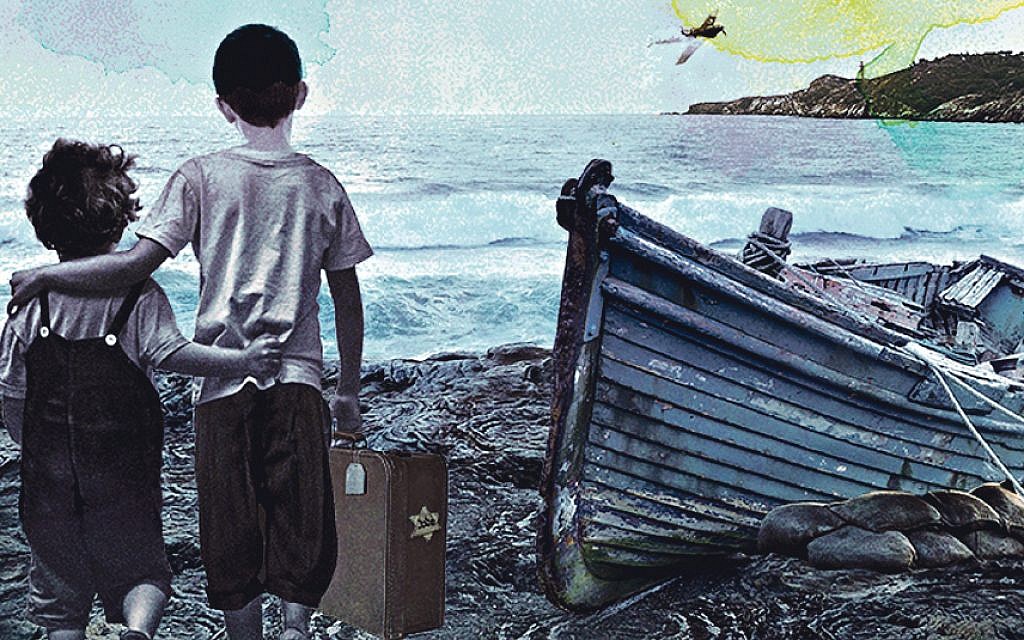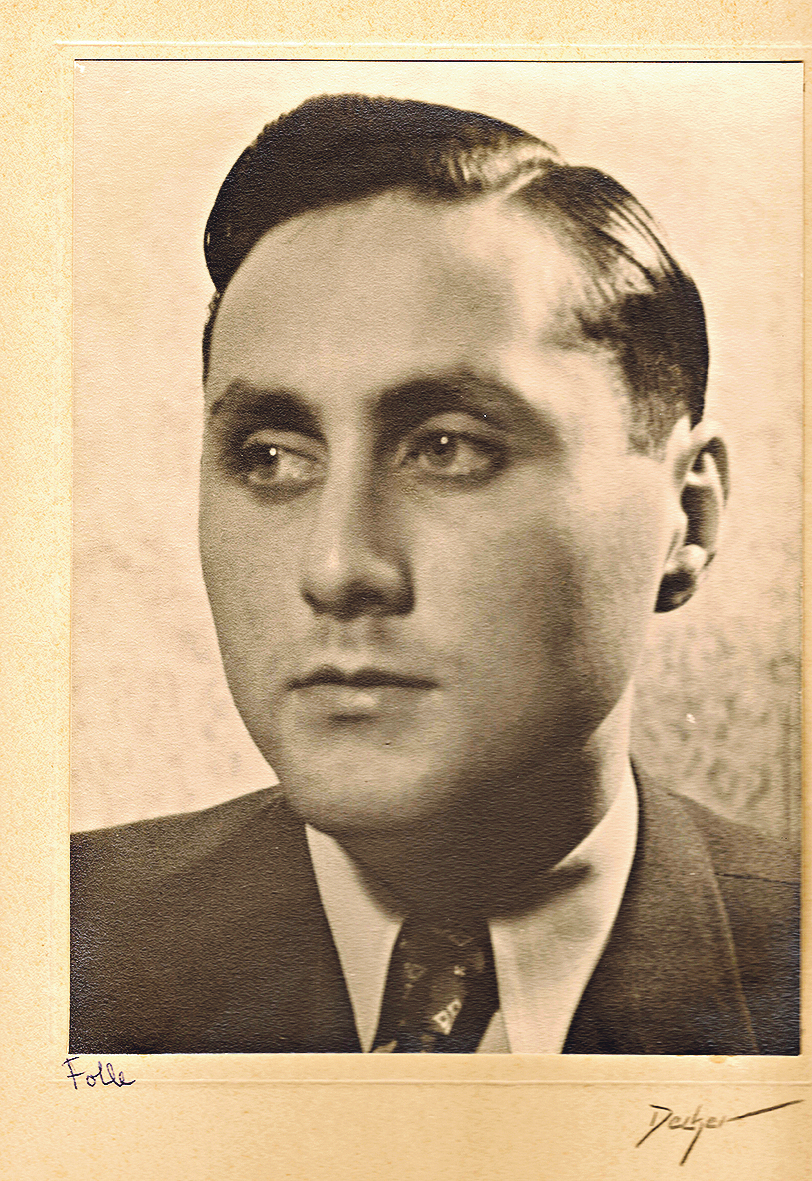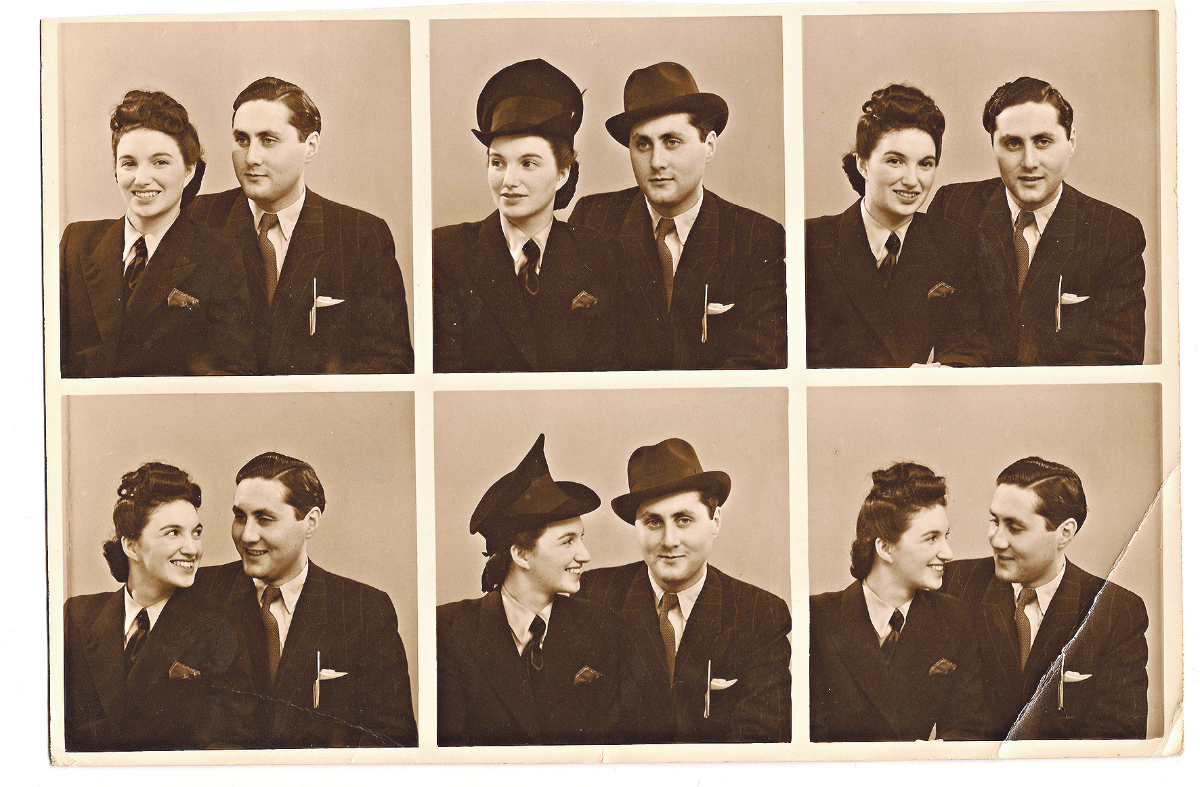Rosenbaum’s Rescue reveals how one tailor may have saved Denmark’s Jews
Alexander Bodin Saphir’s play explores how a high-ranking Nazi's tip-off to his bespoke suit-maker may have resulted in the ‘miracle rescue’ of more than 7,000 lives

The high-ranking Nazi official looked at himself in the mirror and smiled, as he stood inside the tiny tailor’s shop in the red-light district of Copenhagen.
It was autumn 1943, and he was pleased with the bespoke suit made for him by a young Jewish tailor. At other times, a satisfied customer might have offered a tip, but in this case it was a tip-off – and one that more than likely saved the lives of just over 7,000 Danish Jews.
Following a separate warning from a leading Nazi official – and on the day before Rosh Hashanah in 1943 – Marcus Melchior, Denmark’s acting chief rabbi, told his community there would be no services.
Get The Jewish News Daily Edition by email and never miss our top stories Free Sign Up
“Go home and sort out your affairs,” he said, “and then find any way you can to flee.”
The majority of those who took heed escaped a Nazi round-up and were smuggled by the resistance over to Sweden, where they lived out the remaining years of the Second World War in peace.
Rosenbaum’s Rescue, a new play 15 years in the making, is a fictionalised account of that remarkable story.

But as playwright Alexander Bodin Saphir explains, the “miracle rescue” is a story he knows well, having been born to a Danish-Jewish mother.
He says: “My grandparents, Raphael (Folle) and Sara (Fanny) escaped to Sweden with their baby daughter, Lis, just under two, in their arms. They would never speak about it, but I had always known about the ‘miracle rescue’. It is part of the mythology of Denmark itself, that Danish Jews were largely saved from
the Holocaust.”
But as Saphir explains, not everything is as black and white as previously thought. One well-known story is that the Danish King, Christian X, wore the Nazi-imposed yellow star in solidarity with his country’s Jewish community.
As historians have debated, this would have been a very nice gesture, except it wasn’t true – because Denmark’s Jews did not wear the yellow star.
The central figure in Denmark’s delicate relationship with the Third Reich was a clever lawyer, Dr Werner Best, who was not only deputy head of the SS and a key member of Hitler’s inner circle, but the overall commandant of Denmark after the Nazi invasion of 1940.
“Denmark did not collaborate with the Nazis as such. But you could say, in a low-key way, there was co-operation”.
That was something set in place by far-sighted members of the Danish government, who were aware resistance from such a small country was bound to end with a very brutal attitude by the Germans.
Instead there was a “softly-softly” policy. Best himself, known as “the Butcher of Paris” for his attitude towards French Jews, presided over a Denmark where Danish Jews faced none of the restrictions faced by other Jews in Nazi-occupied Europe.
Nevertheless, by the summer of 1943 there was an increased resistance in Denmark – and Hitler was not happy.

To send a message of the level of Nazi displeasure, it was announced that anyone caught defying the regime would be tried in German courts — and face the death penalty. In response, the Danish parliament resigned en masse.
The stage was set for a sharper crackdown – and that was to make an example of the country’s Jews, by rounding them up for deportation.
“The round-up was scheduled for Rosh Hashanah, because the Germans figured all the Jews would be at home,” says Bodin Saphir.
The subsequent “miracle rescue” became part of the wider Danish narrative, “that we as Danes rose up as one and helped save our Jewish brothers and sisters”.
But that, as Bodin Saphir discovered, was not the whole story. It was certainly true that Denmark’s Jews were saved, to an extent, by virtue of the fact they were regarded as Danish first by the rest of the population.
The other crucial element was that the “miracle rescue” could not have taken place without advanced warning from various Nazi officials.
That is how Rabbi Melchior was able to tell people; and the round-up itself was nothing like other round-ups elsewhere in Europe. Soldiers were instructed to knock on doors and not break them down or smash windows. In at least one case, a family slept through the entire round-up.
Folle, Bodin Saphir’s grandfather, was a proud and dedicated member of the Danish Home Guard.

“On 27 September 1943, he went to his local office and told them he was leaving for a foreign country and so had to resign.”
He also happened to be a tailor – and Saphir now knows the high-ranking Nazi official who liked his suit so much was Commandant Best.
First, his customer measurements survived the war and were found in the tailor’s shop by Saphir’s cousin, Margit; and, second, that 27 September was two days before the warnings of the round-up.
Strange, but true, Best’s bespoke-made suit by a Jewish tailor may well have saved the Danish-Jewish community.
- Rosenbaum’s Rescue runs at Park Theatre, Finsbury Park, until 9 February. Details: parktheatre.co.uk

Thank you for helping to make Jewish News the leading source of news and opinion for the UK Jewish community. Today we're asking for your invaluable help to continue putting our community first in everything we do.
For as little as £5 a month you can help sustain the vital work we do in celebrating and standing up for Jewish life in Britain.
Jewish News holds our community together and keeps us connected. Like a synagogue, it’s where people turn to feel part of something bigger. It also proudly shows the rest of Britain the vibrancy and rich culture of modern Jewish life.
You can make a quick and easy one-off or monthly contribution of £5, £10, £20 or any other sum you’re comfortable with.
100% of your donation will help us continue celebrating our community, in all its dynamic diversity...
Engaging
Being a community platform means so much more than producing a newspaper and website. One of our proudest roles is media partnering with our invaluable charities to amplify the outstanding work they do to help us all.
Celebrating
There’s no shortage of oys in the world but Jewish News takes every opportunity to celebrate the joys too, through projects like Night of Heroes, 40 Under 40 and other compelling countdowns that make the community kvell with pride.
Pioneering
In the first collaboration between media outlets from different faiths, Jewish News worked with British Muslim TV and Church Times to produce a list of young activists leading the way on interfaith understanding.
Campaigning
Royal Mail issued a stamp honouring Holocaust hero Sir Nicholas Winton after a Jewish News campaign attracted more than 100,000 backers. Jewish Newsalso produces special editions of the paper highlighting pressing issues including mental health and Holocaust remembrance.
Easy access
In an age when news is readily accessible, Jewish News provides high-quality content free online and offline, removing any financial barriers to connecting people.
Voice of our community to wider society
The Jewish News team regularly appears on TV, radio and on the pages of the national press to comment on stories about the Jewish community. Easy access to the paper on the streets of London also means Jewish News provides an invaluable window into the community for the country at large.
We hope you agree all this is worth preserving.
-
By Brigit Grant
-
By Laurent Vaughan - Senior Associate (Bishop & Sewell Solicitors)
-
By Laurent Vaughan - Senior Associate (Bishop & Sewell Solicitors)
-
By Laurent Vaughan - Senior Associate (Bishop & Sewell Solicitors)
-
By Laurent Vaughan - Senior Associate (Bishop & Sewell Solicitors)





















